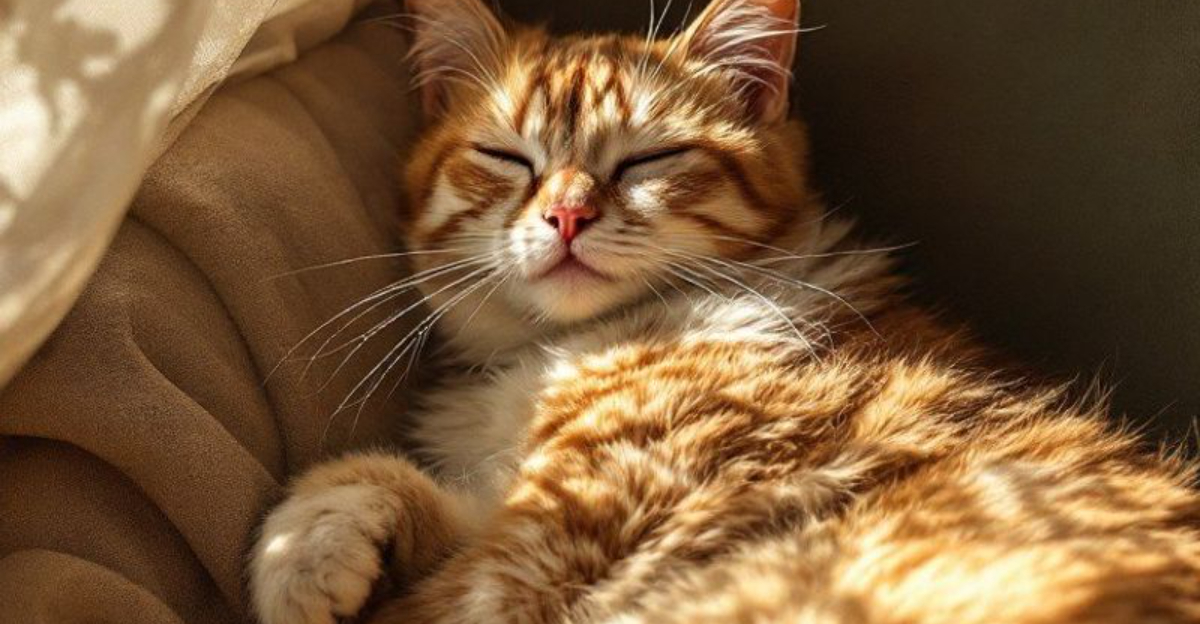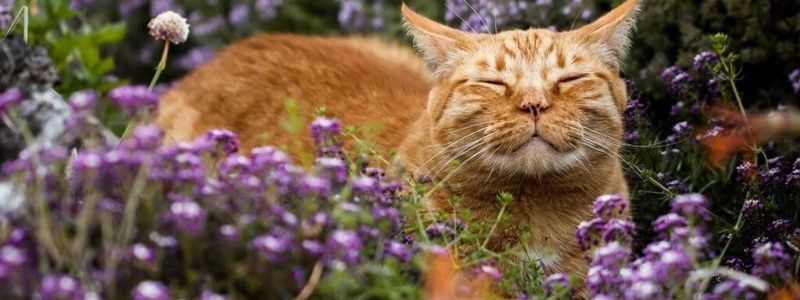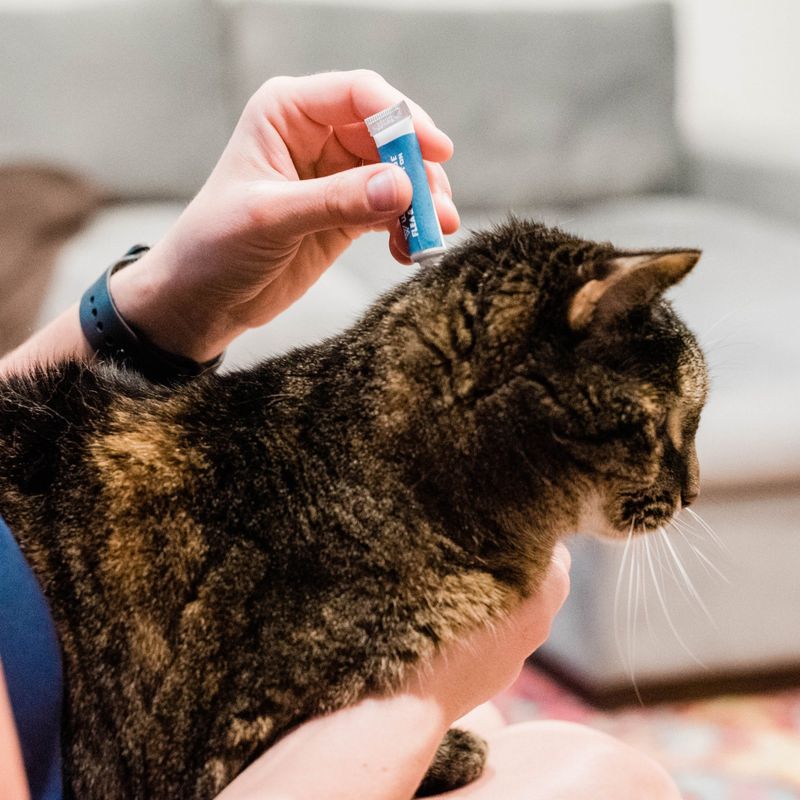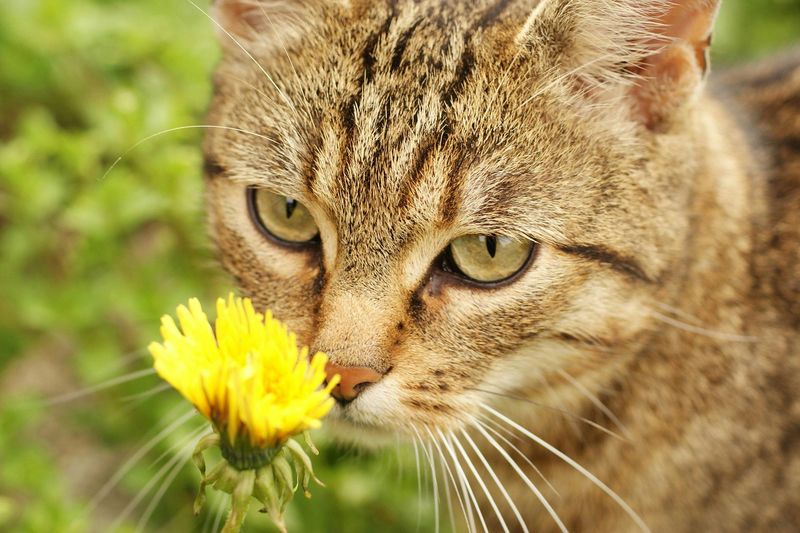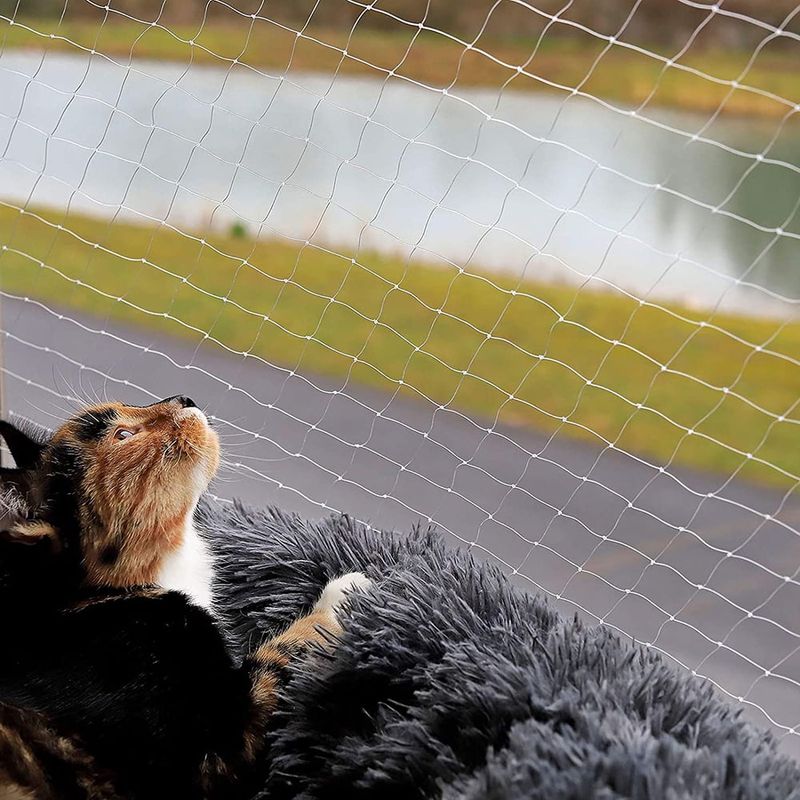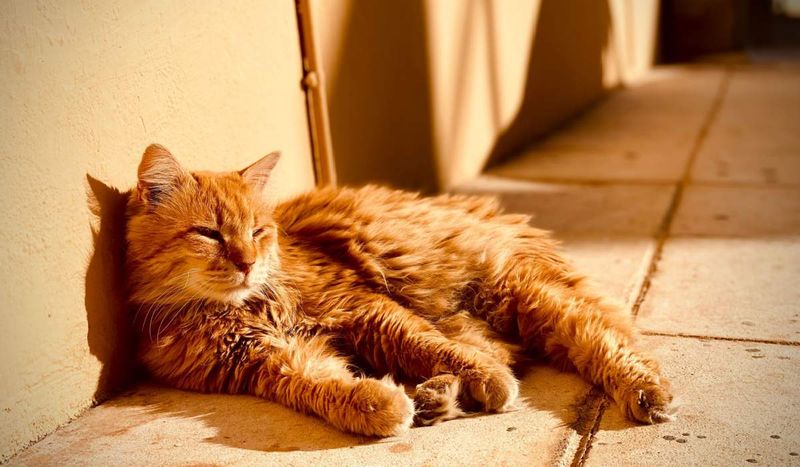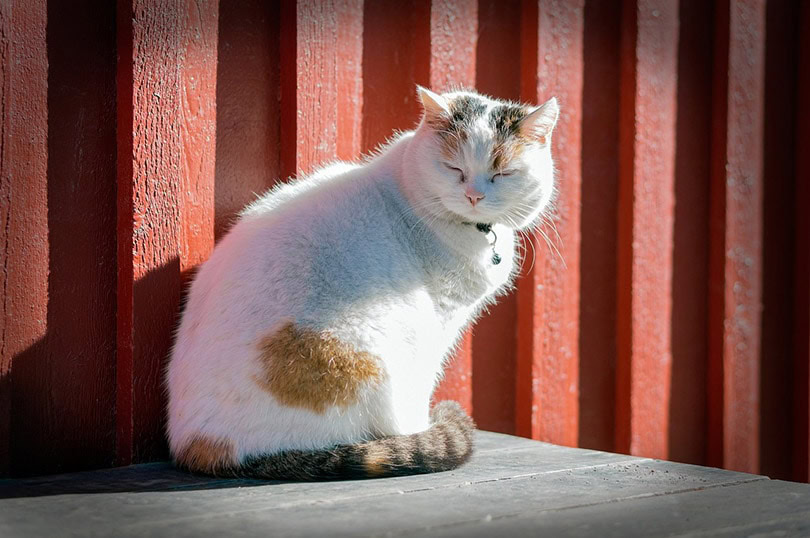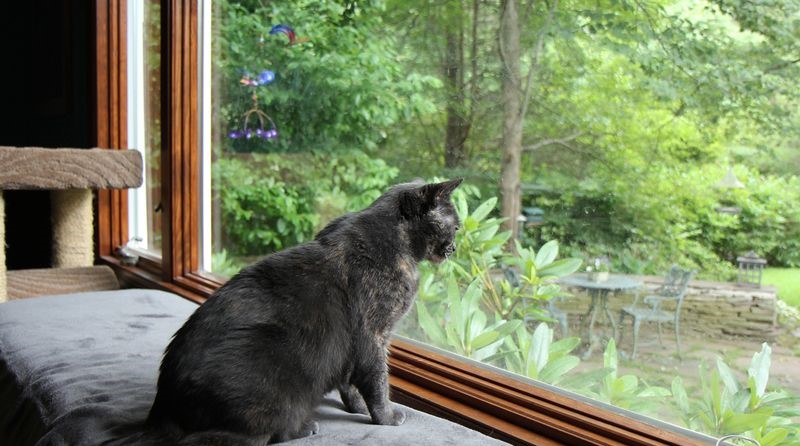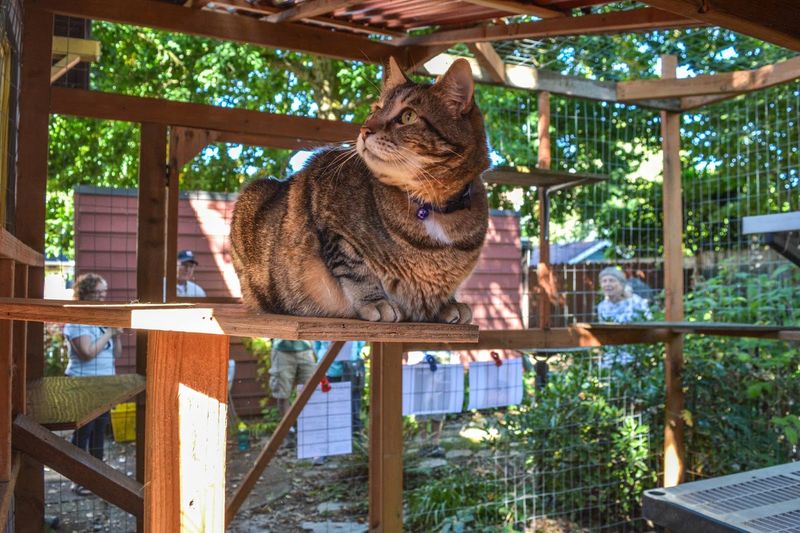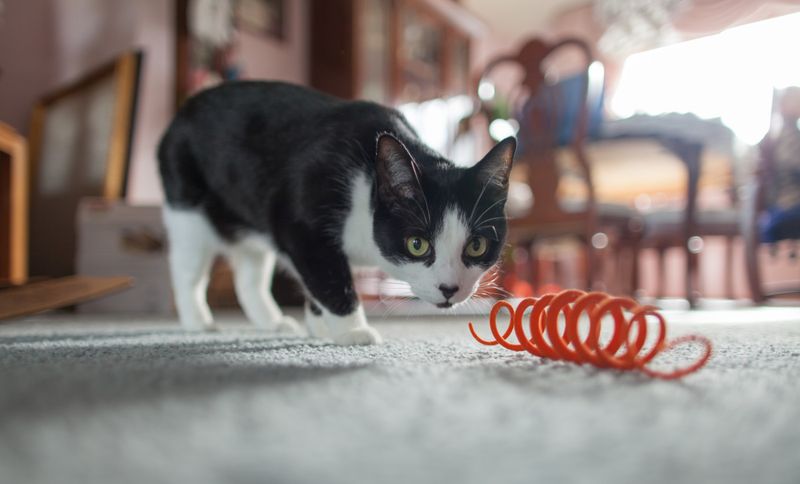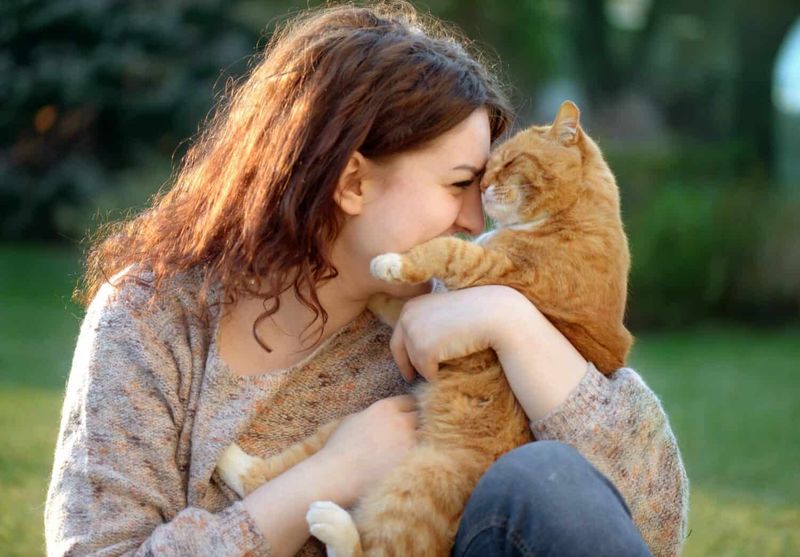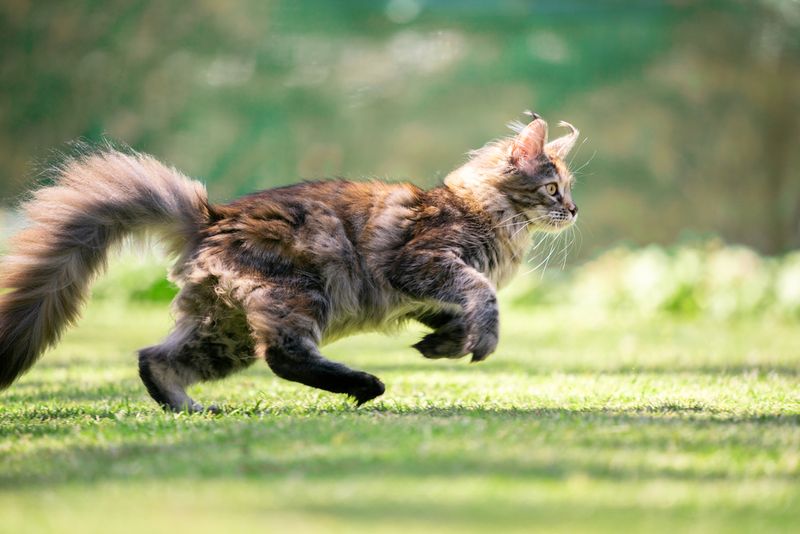📖 Table of Content:
- 1. Toxic Plants Blooming
- 2. Flea & Tick Infestations
- 3. Pesticides & Lawn Chemicals
- 4. Allergies
- 5. Open Windows & High Places
- 6. Overexposure to Sun or Heat
- 1. Sun-Drenched Naps
- 2. Window Watching & Bird TV
- 3. Fresh Air & Enrichment
- 4. Spring Cleaning Surprises
- 5. Increased Playtime
- 6. Natural Instinct Stimulation
As the world awakens from its winter slumber, spring brings longer days, blooming gardens, and a fresh sense of energy. For cat owners, it’s a wonderful time to observe how our feline friends react to the changing environment. Whether it’s basking in a sunbeam or curiously watching fluttering birds outside the window, spring adds a touch of magic to a cat’s daily life.
Yet with all its beauty, spring also introduces a unique set of hazards that can catch even seasoned pet parents off guard. From hidden dangers in blooming flowers to the rising threat of fleas and ticks, this season demands a bit of extra attention to ensure your cat remains happy and healthy. While cats are curious and agile by nature, their instincts don’t always protect them from environmental threats—especially ones that come disguised as seasonal pleasures.
In this guide, we’ll explore six potential dangers that spring brings to your feline companion, as well as six joys that make the season truly special. The goal is to help you embrace all the wonderful things this season offers, while being alert to the risks that could turn a joyful spring day into an emergency. Read on to keep your cat safe, enriched, and thriving this season.
1. Toxic Plants Blooming
Springtime gardens often explode with color, but not all blooms are safe for cats. Lilies, in particular, are incredibly dangerous—even a small nibble or exposure to pollen can lead to kidney failure. Many popular spring flowers like tulips, hyacinths, and daffodils contain compounds that are toxic when ingested. Cats that venture outdoors or come into contact with bouquets inside the home are at risk. Pet parents may not realize how fast a curious cat can chew a petal or lick some pollen from their fur. To stay safe, it’s crucial to research which plants to avoid and opt for pet-safe alternatives. Even indoor arrangements should be carefully selected during this vibrant season.
2. Flea & Tick Infestations
With warmer weather comes an uptick in flea and tick activity, making spring a high-risk season for infestations. Outdoor cats are particularly vulnerable, but even indoor cats can be exposed through windows, humans, or other pets. These pests can cause more than just itching—they carry parasites and diseases that can seriously affect your cat’s health. Fleas can transmit tapeworms, while ticks may carry Lyme disease or other infections. Prevention is key, and regular vet-approved treatments should be continued or restarted in early spring. Ignoring this early seasonal spike can lead to long-lasting infestations that are tough to eliminate. Checking your cat’s fur frequently and maintaining a clean environment also go a long way.
3. Pesticides & Lawn Chemicals
Spring yard care can unintentionally create a toxic landscape for cats. Many fertilizers, herbicides, and pesticides are harmful if walked on or ingested, especially if your cat grooms itself after stepping outside. Even small amounts can cause vomiting, tremors, or worse. Cats don’t need to lick the ground to be affected—just brushing up against treated grass can be enough. If you or your neighbors treat lawns, consider keeping cats indoors for a safe window of time. Always follow label directions and opt for pet-friendly products when possible. Being mindful of where your cat roams is a simple but effective way to prevent accidental poisonings.
4. Allergies
Spring allergens don’t spare pets—many cats experience seasonal allergy symptoms that can mimic more serious illnesses. Common signs include sneezing, watery eyes, ear irritation, and excessive scratching. Pollen, mold, and even dust from spring cleaning can trigger reactions. Unlike humans, cats may also show allergy symptoms through their skin, such as developing rashes or bald patches. If you notice changes in your cat’s behavior or grooming habits, it may be worth consulting your vet. Allergy relief treatments and home adjustments, like air purifiers or more frequent vacuuming, can help. Keeping windows screened and wiping down your cat’s fur after time outside may also reduce pollen exposure.
5. Open Windows & High Places
The temptation to fling open the windows as temperatures rise is strong—but it can be dangerous for cats. Without secure screens, cats may fall from ledges or windowsills, often suffering serious injuries. This phenomenon, known as “high-rise syndrome,” is more common than most pet owners think. Cats may be agile, but their curiosity can easily override caution when chasing a bird or exploring an unfamiliar perch. Always ensure windows have sturdy screens before leaving them open. It’s also wise to inspect balconies or porches for gaps a cat could slip through. A little preparation now can prevent a potentially life-threatening fall.
6. Overexposure to Sun or Heat
As cats stretch out in sunny spots, they’re soaking up more than just warmth—they’re also exposed to potential heat risks. Prolonged sunbathing, especially without access to shade or water, can lead to dehydration or overheating. Light-colored or thin-furred cats are even susceptible to sunburn on their ears, nose, and belly. Though it may seem harmless indoors, direct sun through windows can get intense. Make sure there are shaded retreats and fresh water available throughout your home. You can also apply vet-approved pet sunscreen if your cat spends time outside. Spring may not be sweltering, but it’s the perfect time to build sun-safe habits.
1. Sun-Drenched Naps
Few things bring a cat more pleasure than finding that perfect sunny patch to curl up in. Spring fills homes with soft, golden light that’s ideal for midday naps. These warm spots can soothe muscles and make even the crankiest feline purr with contentment. The comfort of a sunbeam is more than just cozy—it helps regulate sleep and mood. You might even notice your cat gravitating toward different windows throughout the day, following the sun’s arc. Make their favorite lounging spots more inviting with a blanket or bed. A simple shift in the light can turn any room into your cat’s new happy place.
2. Window Watching & Bird TV
With spring buzzing to life, the view outside becomes a thrilling spectacle for indoor cats. Birds gathering twigs, butterflies flitting about, and squirrels chasing each other all offer endless visual entertainment. You’ll often find your cat perched by the window, ears twitching and tail flicking in excitement. Some cats even “chirp” or chatter in response to nearby activity. Adding a bird feeder outside the window can enhance this interactive show. Be sure the window area is safe and cozy for long observation sessions. Nature’s reawakening provides the ultimate enrichment for curious feline minds.
3. Fresh Air & Enrichment
Fresh spring air stimulates a cat’s senses and offers mental refreshment after months of indoor confinement. Even indoor-only cats benefit from cracked windows, screened patios, or walks in a secure harness. The new scents, sounds, and textures help alleviate boredom and reduce stress. Watching leaves rustle, listening to chirping birds, or sniffing a gentle breeze can be highly engaging. For cats used to outdoor adventures, spring marks the return of stimulating patrols and new territories. Safety should always be a priority, but with preparation, outdoor access can be both fun and secure. Enrichment opportunities like these promote overall feline wellness.
4. Spring Cleaning Surprises
The annual ritual of spring cleaning often uncovers more than just dust—it reveals forgotten treasures for your cat. Toys hidden under couches, cozy blankets stashed away, and cleared floor space all spark feline curiosity. Suddenly, a room that was off-limits is now a new place to explore. Cats love novelty, and even the act of watching you clean can be fascinating for them. You might catch your cat batting at mop strings or diving into empty boxes. Keeping a few of these “found” toys out post-cleaning can bring renewed joy. A cleaner space is good for you, and it’s an adventure zone for your cat.
5. Increased Playtime
Longer daylight hours mean more time for interaction and play with your cat. Many cats become more active with the season, responding to the natural energy around them. You might notice your cat initiating play more often or zooming around the house with renewed vigor. Use this as an opportunity to rotate toys, introduce puzzle feeders, or experiment with new games. Engaged cats are happier and less prone to destructive behaviors or lethargy. Setting aside time each day for active play benefits both of you. Spring is a great time to build a fun routine that sticks.
6. Natural Instinct Stimulation
Spring wakes up more than just trees—it revives your cat’s inner hunter, too. The flurry of motion outside taps into feline instincts like stalking, chasing, and pouncing. Even if they never leave the house, cats benefit from simulated hunting games inspired by the world outdoors. Try tossing feathers, dangling wands, or hiding treats to mimic real-world challenges. Environments rich in sensory input—like open windows or cat trees near outdoor views—keep minds sharp. When cats can safely express their instincts, they’re more fulfilled and less stressed. Spring is nature’s invitation to play, explore, and thrive.
